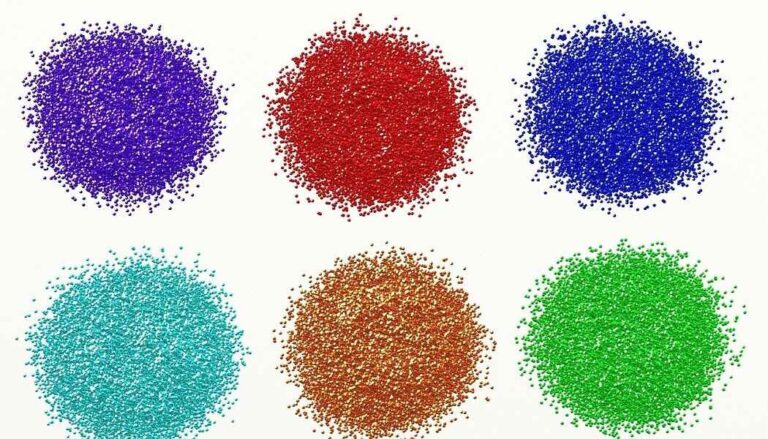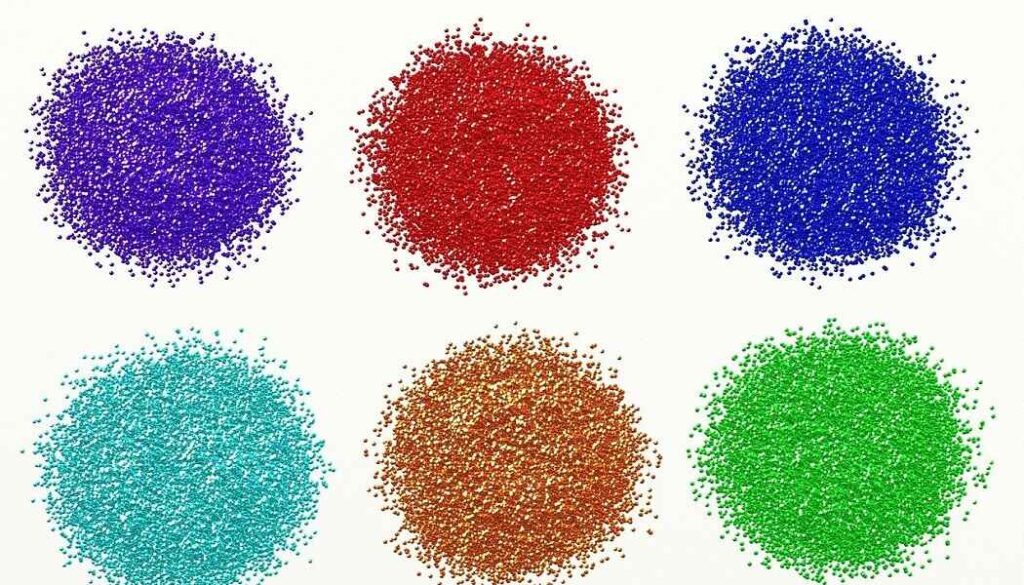
How Much Glitter to Add to a Gallon of Paint?
To achieve different glitter effects, add 150 to 400 grams of glitter to 1 gallon of paint. The amount of glitter will be varied depending on the type of glittery effect you want (light or heavy).
Sparkling and shimmering, glitter has the extraordinary power to transform the ordinary into something magical. If you’re planning to give a fresh coat of glitter effect to your living space, the question inevitably arises: how much glitter should you add to a gallon of paint?

In this writing, we will uncover the secrets to achieving the perfect balance of sparkle and sophistication. So, keep reading.
How Much Glitter to Add to Paint?
The amount of glitter to add to paint can differ depending on personal preference and the desired effect. However, as a general guideline, you can start by adding approximately 5% to 10% glitter by volume to the paint. This means that for every 100 grams (g) of paint, you would add 5 g to 10 g of glitter.
It’s important to note that glitter can be quite dense. So, add smaller amounts first and gradually increase if you want a more pronounced sparkle. Work on test based first to assess the desired glitter concentration and adjust accordingly based on your preference.
Understanding Glitter-to-Paint Ratio
The glitter-to-paint ratio refers to the proportion of glitter to be added to a specific quantity of paint. It determines the overall sparkle and glitter effect in the final paint mixture. The ratio is typically expressed as a percentage or a specific measurement, such as grams or ounces.
Factors to Consider when Determining Glitter Quantity
1. Desired level of sparkle: Consider how much sparkle you want in the final paint. Some people prefer a subtle shimmer, while others may desire a more intense glitter effect. Determining the desired level of sparkle will help you gauge the amount of glitter needed.
2. Paint color and opacity: The color and opacity of the paint will influence how the glitter appears. Lighter colors may require less glitter to achieve the desired effect. Darker colors might need a bit more glitter to make it noticeable. Additionally, opaque paints tend to showcase glitter better than transparent or translucent paints.
3. Glitter size and type: The size and type of glitter particles also affect the overall look. Fine glitter will create a more subtle effect. Larger glitter particles will provide a bolder and more pronounced sparkle. Some glitter types, such as holographic or iridescent, may require different quantities to achieve the desired effect.
General Guidelines for Glitter-to-Paint Ratio
1. Light glitter effect: For a light glitter effect, a ratio of approximately 1% glitter to paint is a good starting point. This means that for every 100 grams of paint, you would add 1 gram of glitter.
2. Medium glitter effect: If you want a moderate amount of sparkle, a ratio of around 2-5% glitter to paint can be used. This means adding 2-5 grams of glitter for every 100 grams of paint. Adjust the ratio within this range based on your desired effect.
3. Heavy glitter effect: For a heavy glitter effect with a lot of sparkle, a ratio of 5-10% or more glitter to paint can be employed. This would involve adding 5-10 grams of glitter to every 100 grams of paint. Experiment and adjust the ratio based on the intensity of glitter you want.
Remember, these guidelines are general recommendations. You can always adjust the glitter-to-paint ratio based on the specific effect you want to achieve.
How Much Glitter to Add to a Gallon of Paint?
The amount of glitter to add to a gallon of paint depends on many things. There is no specific measurement that works universally for all situations. It largely depends on the type and size of the glitter particles, the desired effect, and the manufacturer’s recommendations.
However, as a general guideline, it is common to add around 150-400 grams of glitter per gallon of paint for different glittery effects. In this range, you can achieve light, medium, and heavy glitter effect.
Determining Glitter Weight per Unit Area
To determine the glitter weight per unit area, you will need to refer to the manufacturer’s specifications. Glitter weight is typically measured in grams per square meter (g/m²) or ounces per square foot (oz/ft²). The manufacturer should provide this information on the glitter packaging.
Estimating Surface Area Coverage for a Gallon of Paint
Here, you need to know the spreading rate of the specific paint you are using. The spreading rate is typically provided by the paint manufacturer. It is usually given in square feet per gallon (ft²/gal). This information tells you how many square feet of surface area can be covered by one gallon of paint.
Calculation Formula for Glitter Quantity
Now you have the glitter weight per unit area (g/m² or oz/ft²) and the spreading rate of the paint (ft²/gal). It’s time to calculate the amount of glitter to add to a gallon of paint. The formula is:
1. Convert the spreading rate from ft²/gal to m²/gal if necessary:
– If the spreading rate is given in ft²/gal, multiply it by 0.0929 to convert it to m²/gal.
2. Calculate the surface area covered by a gallon of paint in square meters (m²):
– Divide 1 gallon (3.785 liters) by the spreading rate in m²/gal to get the surface area coverage in m².
3. Multiply the surface area coverage by the glitter weight per unit area to get the glitter quantity:
– Multiply the surface area coverage in m² by the glitter weight per unit area in g/m² (or oz/ft²) to obtain the glitter quantity in grams (or ounces).
Tips to Follow when Adding Glitter to Paint
Adding glitter to paint can add a touch of sparkle and glamour to any surface you wish to transform. However, achieving a beautiful and consistent glitter effect requires careful preparation and application techniques. Check the following tips when adding glitter to paint for a better result.
- Use a stirring stick to thoroughly mix the paint before adding the glitter. This helps ensure that the glitter is evenly distributed throughout the mixture.
- Stir the paint in a circular motion. Make sure to scrape the sides and bottom of the container to incorporate any settled pigment.
- Before applying the glitter-infused paint to a larger surface, test the effect on a small piece of scrap material.
- Evaluate the glitter distribution, density, and overall appearance to ensure it meets your desired effect. Adjust the amount of glitter added if necessary.
- For smaller surfaces or detailed areas, a brush may be more suitable. A roller is ideal for larger areas, as it allows for faster coverage.
- Consider using a sprayer for achieving an even and smooth application on large surfaces. Ensure that the glitter particles are small enough to pass through the nozzle without clogging.
- Start with a base coat of the glitter-infused paint. Apply it smoothly across the surface using the chosen application method.
- To achieve a consistent glitter distribution, maintain a consistent pressure and speed while applying the paint.
- For a denser glitter effect, apply multiple coats. Give each coat enough time to dry before adding the next layer.
Note: Follow tips from manufacturers for the glitter and paint products you are using. Additionally, take appropriate safety precautions, such as wearing protective gear and working in a well-ventilated area.
Final Words
Determining the appropriate amount of glitter to add to a gallon of paint requires careful consideration. It is vital to strike a balance between adding enough glitter to create a dazzling effect and avoiding a clumpy appearance.
The key is to start with a small amount, gradually adding more glitter until the desired level of shimmer is achieved. Ultimately, the right amount of glitter will depend on individual taste and the intended purpose of the painted surface. So, have fun experimenting and unleash your creativity to create a truly mesmerizing paint with just the right touch of glitter!
